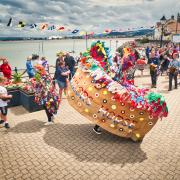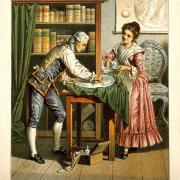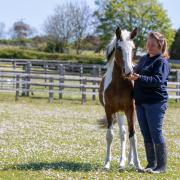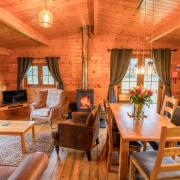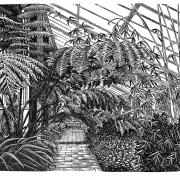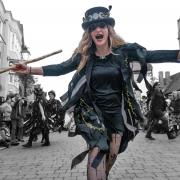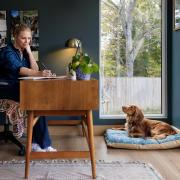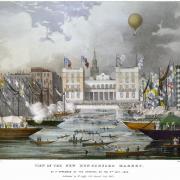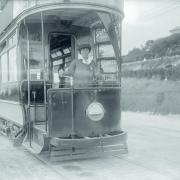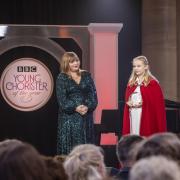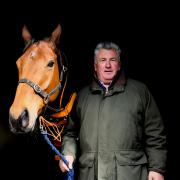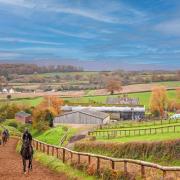Catrina Davies tells us about Once Upon a Raven’s Nest, an emotional, yet inspirational tale of a life well-lived on Somerset’s national park
Catrina, you were fortunate to know the protagonist, Thomas Hedley during his latter years. You have written the book through his voice and in doing so conveyed his stories through his local dialect which ensures the reader really gets to ‘know’ him. We’d love to know about your friendship and how the idea of writing the book came about…
When I met Thomas Hedley I instantly felt a connection because of his West Country accent. He was from Exmoor. I grew up in Cornwall. We talked about surfing and the spots we both knew along the north coast of Cornwall and Devon. He told me stories about growing up on Exmoor in the 1950s, when farmers still used heavy horses. His father was a farm labourer and Thomas used to go with him to work. He helped cut hedges with a child-sized scythe, wore potato sacks to keep the rain off, saw birds dropping dead out of the sky after the farmer put strychnine on the fields. I began to note down certain words and phrases Thomas used – ‘it was the joyest thing’ – so I didn’t forget them. One time I took my hand-held recorder and, with his permission, began to record his stories. I eventually realised his life would make an excellent book.
There are some very entertaining tales included in the book, including the story which gives the book its title. Without giving too much away, do you have a favourite moment?
I think my favourite is the one that gives the book it’s title. Thomas is playing with the goat his mother keeps tethered in the back garden, called Billie Jean. He decides the goat must be hungry, so he starts pulling up handfuls of grass and feeding them to the goat. When Thomas realises what he’s done to his father’s lawn he smells trouble. He runs out of the house and up the lane, his mother chasing him. He darts inside the hedgerow, climbs a big beech and hides himself in an empty raven’s nest. I love the image of this little boy clambering into a raven’s nest, all soft and cosy, and sitting with his legs swinging down, where nobody can get him. They do get him, though, and that’s the next part of the story.

At the beginning of each chapter you have also included factual entries about climate change. This is a very unique concept and one that adds additional depth to the book. How did you come up with idea, and why do you think it works so well?
It was difficult to do, because I was trying to line up two very different time-frames. Although Thomas’s life is at the centre of it, the book actually starts 4.5 billion years ago and ends 4.5 billion years in the future. I am fascinated by the way our individual lives are so tiny, yet feel so huge; our bodies are so fragile, yet our attachments are so strong: our loves and losses, joys and tragedies. Whereas geological time, and the kinds of tectonic changes that are happening all around us – climate change, ecological breakdown – are huge: all-encompassing and potentially apocalyptic. Yet they fade into the background, too big to comprehend.
Thomas was born in 1953, near the beginning of a period scientists call the Great Acceleration, a period of unfathomably rapid technological change. Almost all the damage humans have done to the natural world has happened since the 1950s. I wanted to somehow get across the sense that we are hurtling towards a new reality. Thomas’s accident meant that he had to reckon personally and viscerally with the kind of irrevocable change we’re all going to have to reckon with sooner or later.
You’ve been privileged to ‘see’ Exmoor National Park through Thomas’ eyes, how has this perspective altered your personal view of Exmoor?
The first time I visited Exmoor was with Thomas. It was like visiting a place I’d read about in a book. Thomas pointed out the farms where his father had worked – Halse farm, Knaplock farm. We went to the cottage where his mother was born, and her mother, and her mother’s mother, now a tea room, and bought an ice cream. I went back to Exmoor several times during the course of writing the book, and spent many happy hours hiking and biking around the moor. It’s a place like no other, with a kind of understated magic that’s hard to put into words. I love being there and imagining Thomas rampaging around in his various cars and trucks and tractors, causing havoc, collecting antlers, breaking hearts. I feel at home on Exmoor, as though the ghosts of Thomas are my family.
In addition to being an author, you are also a musician. Tell us how living in the West Country inspires you.
I’ve tried to live in other places, but my nervous system seems to need mist and drizzle, and granite, and westerly gales. I enjoy being out of my natural habitat, but I need to go home to work. Living in the West Country, where I have lived now for forty years, feels like a gift and a responsibility. There is nowhere else I will ever know or care about in the same way, and that kind of care is very grounding and motivating when it comes to making books and songs, at least for me. catrinadavies.co.uk





